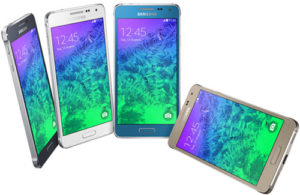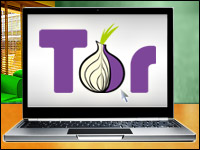
Users of eight HTC smartphones will be among the first to receive an upgrade to Google’s new Android Ice Cream Sandwich, the device maker announced early on Monday.
Not only is the brand-new HTC Vivid — which went on sale Monday — upgradable to Ice Cream Sandwich, but devices including the HTC Sensation, HTC Sensation XL, HTC Sensation XE, HTC Rezound, HTC EVO 3D, HTC EVO Design 4G and HTC Amaze 4G will also get the new version of the mobile platform in early 2012, HTC said in a post on its official Facebook page.
The company described the set of devices named as “the first wave” of HTC phones that will receive upgrades, adding that “we’re continuing to assess our product portfolio, so stay tuned for more updates on device upgrades, timing and other details about HTC and Ice Cream Sandwich.”
HTC declined to provide further details to LinuxInsider.
‘It Can Get Sticky for the Carrier’
HTC’s announcement may have been sweet news for users of the eight phones in question, but plenty of others were left with a bitter taste in their mouths.
More than 1,400 comments had been left within just a few hours of the posting of the announcement, many of them expressing dissatisfaction with the way Android updates are being handled.
“This is the way HTC and in fact many in the industry operate,” tech analyst and consultant Jeff Kagan told LinuxInsider.
‘Stores Should Brace for Impact’
“New versions and new OSes come out all the time,” Kagan explained. “In the early days [following a release], when users want the new OS but cannot upgrade yet, it can get a little sticky for the carrier. But this is typical — not just for HTC but for many manufacturers.”
It’s actually the stores of carriers like AT&T, Verizon, Sprint and T-Mobile, rather than device manufacturers, that often end up dealing with unhappy customers, he added.
In the wake of HTC’s announcement, then, “I think the network retail stores should brace for impact,” Kagan said.
‘You Want to Invest in New Devices’
It’s really up to device vendors and carriers to say which devices will get upgrades, but vendors have more say, Chris Hazelton, research director for mobile and wireless with the 451 Group, told LinuxInsider.
Carriers are generally driven by the desire to engage their subscribers and so tend to be “pro-updates,” Hazelton explained.
Typically the only costs associated with updates for them are the resulting surge in traffic as those updates are pushed out, he added, as well as the possibility of a spike in support calls immediately afterward.
Device makers, on the other hand, “want to sell the latest and greatest to carriers,” Hazelton pointed out. “Once they’ve sold to the carrier, a lot of device vendors don’t have as much engagement with the end user.”
‘How HTC Handles This Is Key’
Device makers also need to differentiate new devices from past ones, so limiting the reach of Ice Cream Sandwich to a few devices “may drive upgrades,” he noted.
Then, too, there’s the possibility of hardware or driver limitations. “Rewriting drivers for new OSes can be very time consuming, Hazelton said. “You want to invest it in new devices that will bring in new revenue rather than satisfying your customer’s customers.”
In any case, “how HTC handles this is key,” Kagan opined.
To assuage unhappy customers who can’t get the upgrade, for example, “they can offer new devices at special discounts for those users,” he suggested. “That would help take some of the sting out of paying the new price just to get the new OS.”
A More Consistent Experience
As for Ice Cream Sandwich itself, the lure for tablet users is understandable, since the operating system was built with them in mind.
Do smartphone users have as much to look forward to?
The benefits will primarily be felt by users with larger-screened devices, Hazelton said, as well as by those with multiple Android-powered devices, who will enjoy a more consistent experience.
A Question of Configuration
Hazelton wasn’t aware of any downside to using Ice Cream Sandwich on smaller devices, though he noted that many of the implementation details would be determined by device vendors and carriers.
Indeed, “it all depends on how this is configured,” Kagan agreed.
“If it is the same OS for both devices, yes, there will be some issues and sacrifices; however this OS may be able to be used on various devices and have different features for each,” he explained. “In that case, nothing will have to be sacrificed. We’ll have to wait and see.”



















































